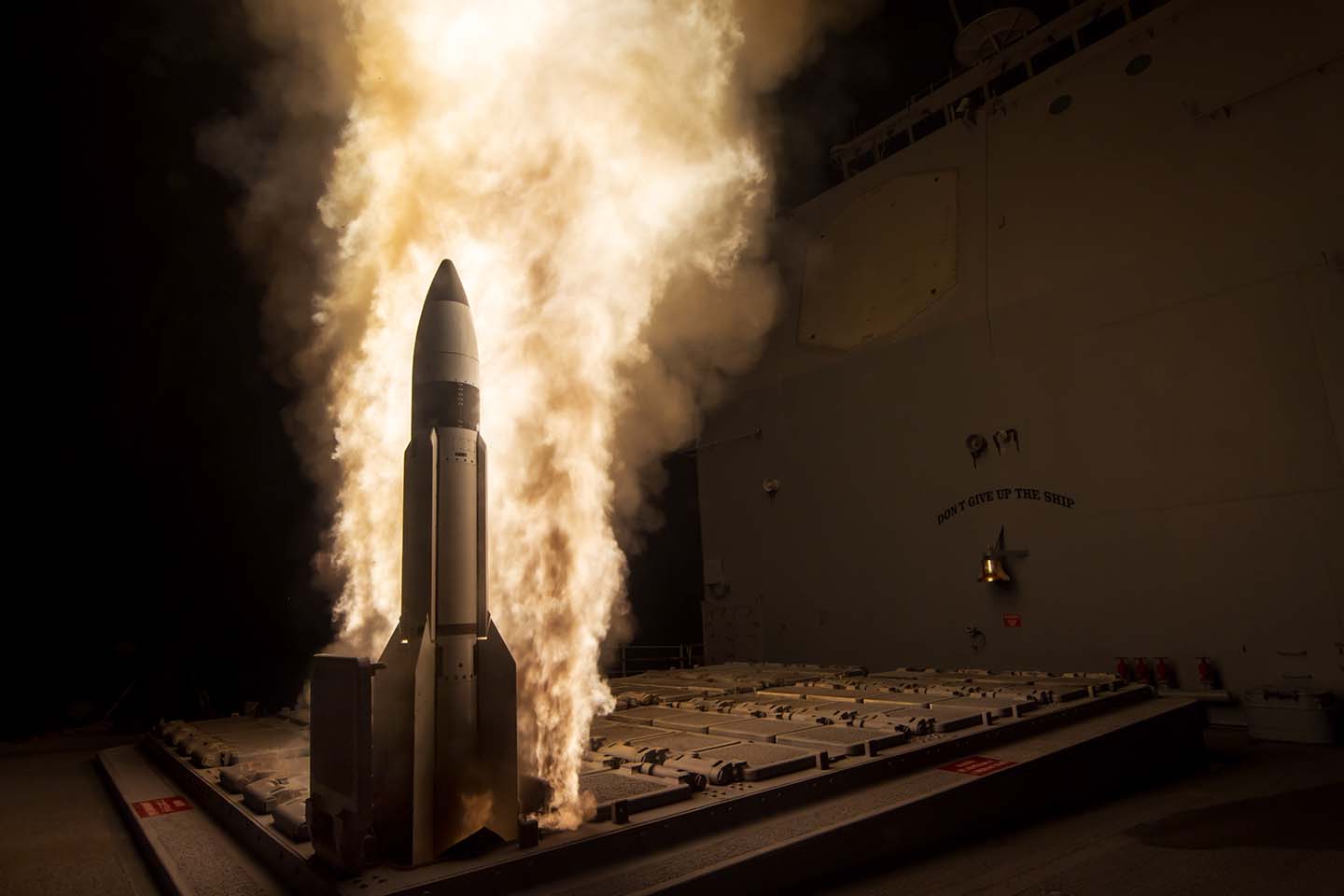Press Release
APL Plays Key Role in Operational Ballistic Missile Defense Test
Fri, 10/04/2013 - 10:15
Engineers from the Johns Hopkins University Applied Physics Laboratory (APL) played a major role in the successful intercept of a ballistic missile target with the second-generation Aegis Ballistic Missile Defense (BMD) Weapon System and Standard Missile-3 (SM-3) Block IB guided missile. The flight test was conducted by the Missile Defense Agency (MDA) and U.S. Navy sailors aboard the USS Lake Erie (CG 70).
APL, MDA and the Navy worked with industry partners to execute the operational test, called Flight Test – Standard Missile-22 (FTM-22). It was the culmination of a series of flight tests designed to prove the effectiveness of the SM-3 Block IB guided missile and its readiness to move into its production phase. The APL team led system-level performance analysis and evaluation for FTM-22, resulting in the fifth successful intercept test of the Aegis BMD Weapon System and SM-3 Block IB guided missile.
At approximately 7:33 p.m. Hawaii Standard Time on Oct. 3 (1:33 a.m. EDT, Oct. 4), an unguided ballistic missile target was launched from the Pacific Missile Range Facility on Kauai. The target flew northwest toward a broad ocean area of the Pacific. Following the target launch, the USS Lake Erie detected and tracked the missile with its onboard AN/SPY-1 radar. The ship, equipped with the second-generation Aegis BMD Weapon System, developed a fire control solution and fired an SM-3 Block IB guided missile. The SM-3 maneuvered to a point in space and released its kinetic warhead. The kinetic warhead acquired the target, diverted into its path and, using only the force of a direct impact, engaged and destroyed the ballistic missile target.
APL engineers and analysts worked closely with MDA to plan the test’s live-fire scenario and evaluate system performance before the flight. “APL’s end-to-end knowledge of Aegis BMD and SM-3 allowed us to conduct mission planning and performance prediction to prove the capabilities of the SM-3 Block IB guided missile in a series of increasingly sophisticated tests leading to FTM-22,” said APL’s Vishal Giare, assistant Ballistic Missile Defense Program Area manager for Aegis BMD. “The collaboration of APL’s dedicated staff with government and industry partners is a hallmark of the Aegis BMD test program, and once again demonstrated the team’s diligence and agility to complete the testing needed to support SM-3 Block IB production.”
As the technical direction agent for Aegis BMD, APL is an integral part of the full systems engineering life cycle, including testing and transition of the BMD capability to the fleet.
This successful flight test improves the Aegis BMD flight test record to 28 successful intercepts in 34 attempts.
